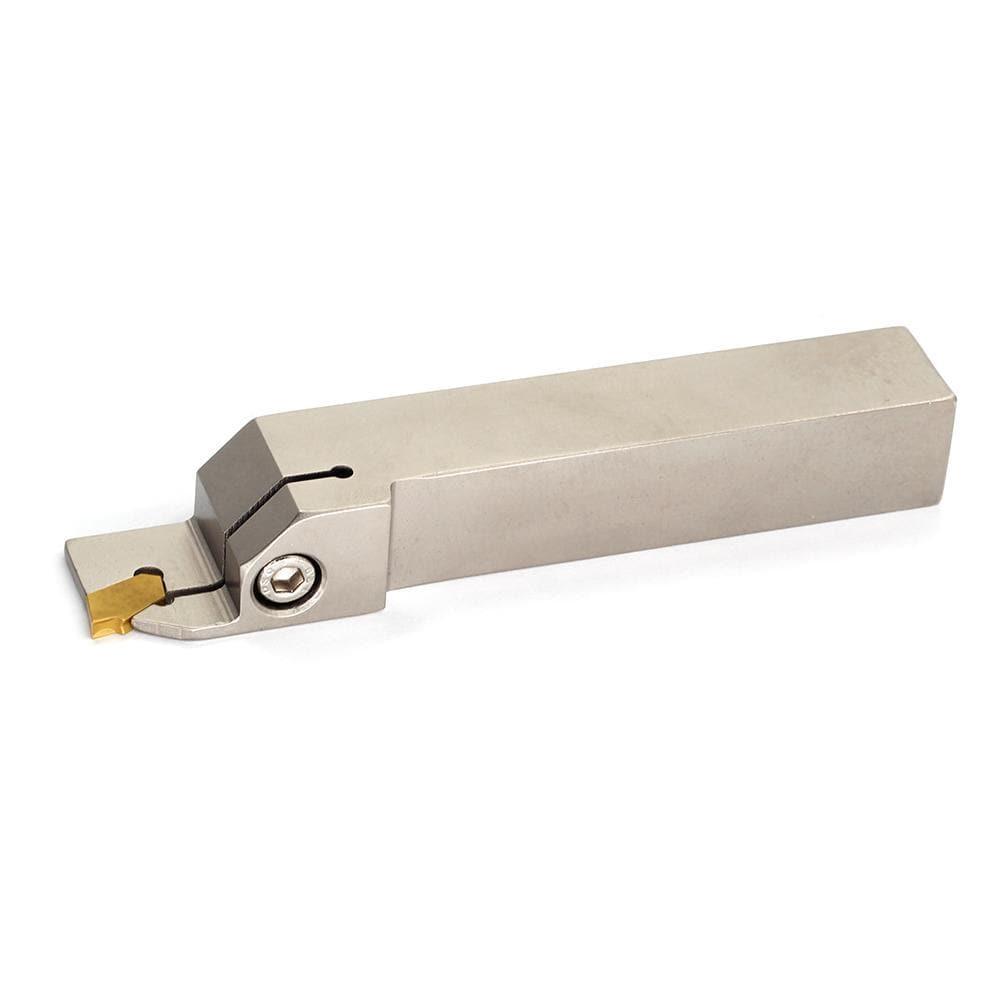The lathe parting tool and the lathe grooving tool are both cutting tools used in lathe operations, but they have distinct differences in their design, cutting geometry, and intended applications. Let's explore their differences in detail:
1. Design and Cutting Geometry:
Lathe Parting Tool
:
The lathe parting tool is specifically designed for cutting off or separating a workpiece into two distinct parts. It typically consists of a narrow, rectangular or square-shaped cutting blade mounted on a tool holder. The cutting blade is ground with a 0-degree rake angle, which means the cutting edge is perpendicular to the workpiece. This design helps in achieving a clean, perpendicular cut during parting operations. Parting tools often have a flat top or slight back rake to provide optimal chip control.
Lathe Grooving Tool
:
The lathe grooving tool is designed for creating grooves, channels, or recesses in a workpiece. It comes in a variety of shapes and sizes, including square, round, or diamond-shaped cutting inserts. These inserts have cutting edges along their periphery or sides, allowing them to remove material while cutting a groove. Grooving tools may have different geometries, such as neutral or positive rake angles, depending on the material being cut and the desired chip control.
2. Intended Applications:
Lathe Parting Tool:
The primary purpose of a lathe parting tool is to separate a workpiece into two distinct parts. It is commonly used for operations such as cutting off a piece from a bar stock or parting cylindrical workpieces. Parting tools are often used in applications where a clean, perpendicular cut is required, such as creating precise shoulder cuts or separating parts of an assembly.
Lathe Grooving Tool:
The lathe grooving tool is used for creating grooves, recesses, or channels in a workpiece. It is suitable for various applications, including creating O-ring grooves, keyways, or decorative grooves. Grooving tools are versatile and can be used for both external and internal grooving operations, depending on the tool's design and the lathe setup.

3. Cutting Width and Depth:
Lathe Parting Tool:
Parting tools typically have a narrow cutting width to minimize the amount of material being removed during the parting operation. The cutting width is chosen based on the desired separation width of the workpiece. The cutting depth can vary depending on the workpiece material and the lathe's capacity, but it is generally limited to avoid excessive stress on the tool and the lathe.
Lathe Grooving Tool:
Grooving tools come in a range of cutting widths to accommodate different groove sizes. The cutting width can be selected based on the desired width and depth of the groove. Grooving tools can create grooves of various depths, allowing for flexibility in machining operations.
4. Chip Control and Tool Life:
Lathe Parting Tool:
Parting tools are designed to provide efficient chip control, ensuring the chips are properly evacuated from the workpiece. This helps prevent chip clogging and improves the overall cutting performance. Parting tools often have chip breakers or grooves on the cutting edge to aid in chip control. Since parting operations involve cutting through the entire workpiece, the tool experiences higher stresses, and tool life can be shorter compared to grooving tools.
Lathe Grooving Tool:
Grooving tools are also designed for effective chip control, but the chip formation can vary depending on the groove width and depth. Proper chip control helps in maintaining good surface finish and prolonging tool life. Grooving tools can handle a wider range of groove widths and depths, allowing for greater versatility in various machining applications.
In summary, the lathe parting and grooving tool
have distinct designs and applications. The parting tool is specialized for separating workpieces and provides clean, perpendicular cuts. In contrast, the grooving tool is used for creating grooves or channels and offers versatility in machining applications. Understanding their differences can help in selecting the appropriate tool for specific lathe operations.